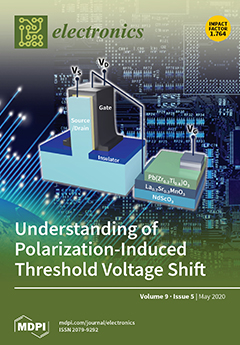To meet the demands of maritime transportation on ships, including satellite positioning, wireless communication, and radio frequency identification (RFID) for cargo handling management, a function reconfigurable antenna based on liquid metal is proposed in this paper. The antenna is composed of 3-D-printed hollow
[...] Read more.
To meet the demands of maritime transportation on ships, including satellite positioning, wireless communication, and radio frequency identification (RFID) for cargo handling management, a function reconfigurable antenna based on liquid metal is proposed in this paper. The antenna is composed of 3-D-printed hollow cavities, a two-step impedance feeding sheet, and two feeding probes. The 3-D-printed hollow cavities contain a big hollow helix cavity, a hollow cone loaded cylinder cavity, four hollow cylinder cavities, and four small hollow helix cavities. By filling the liquid metal into different hollow cavities, reconfigurable functions are generated, including right-handed circular polarization (RHCP), omnidirectional linear polarization (O-LP), pattern reconfigurable circular polarization, and omnidirectional left-handed circular polarization (O-LHCP). To illustrate this, a prototype is fabricated using 3-D-printed photopolymer resin and etching technology. The measurement results agree well with the simulated ones in terms of return loss, radiation pattern, gain, and axial ratio (AR). For the five reconfigurable states, the measured relative bandwidths for |
S11| < −10 dB are 44.7%, 41.7%, 30.4%, 28.1%, and 10.8%, respectively, which covers the bands of a global navigation satellite system (GNSS), wireless communication system, and RFID communication system. Attributing to the advantages of its compact structure, flexible conversion, and good performance, the proposed antenna is a good candidate for maritime transportation applications.
Full article





